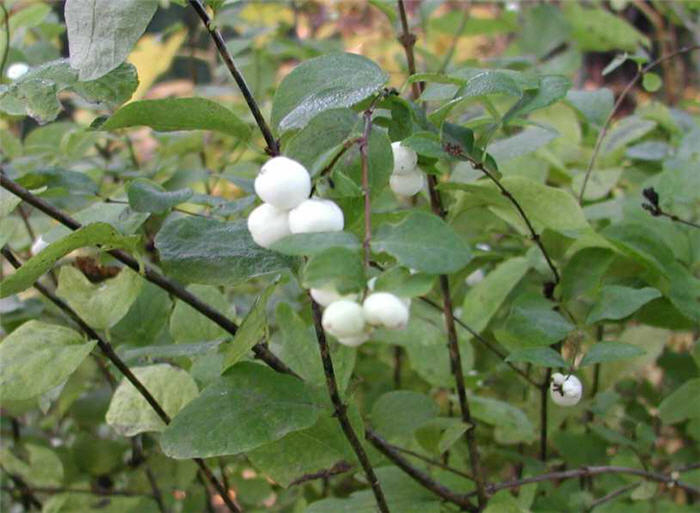| Botanical Name: Symphoricarpos albus | |
| Common Name: White Snowberry |

-
Anatomy
-
Culture
-
Design
Plant Type
Shrub
Height Range
3-6'
Flower Color
Pink, White
Flower Season
Spring
Leaf Color
Blue Green
Bark Color
Brown
Fruit Color
White
Fruit Season
Summer, Fall, Persistent
Sun
Full, Half, Shade
Water
Low, Medium, Extra in Summer
Growth Rate
Moderate
Soil Type
Sandy, Clay, Loam, Rocky, Unparticular
Soil Condition
Average, Rich, Poor, Well-drained, Moist, Dry
Soil pH
Acid, Neutral, Basic
Adverse Factors
Invasive
Design Styles
English Cottage, Ranch, Woodland
Accenting Features
Fall Color, Showy Flowers
Seasonal Interest
Winter, Summer, Fall
Location Uses
Shrub Border, Foundation
Special Uses
Filler, Mass Planting, Naturalizing
Attracts Wildlife
Birds
Information by: Stephanie Duer
Photographer:
Photographer:
-
Description
-
Notes
White Snowberry is a deciduous shrub with attractive, arching slender stems. Creamy white to pale pink flowers appear at the tips of branches in spring, followed by clusters of white berries that persist all summer and into the fall. Leaves are soft, dull green, changing to yellow in the autumn. Berries may persist into winter months, providing forage for migrating birds. Grows 4 to 6 feet tall and wide. Sun to light shade.
Though not as drought tolerant as the native Symphoricarpos, White Snowberry is still a good choice for dry shade areas. May need more water is placed in front of a sunny wall. Every few years, prune the shrub hard to just a foot above ground to rejuvenate it and encourage new growth near its base. Good in informal and naturalized areas, and for erosion control, due to its suckering habit.